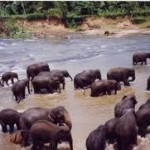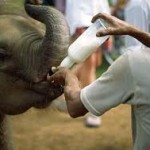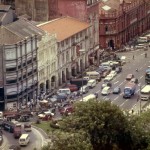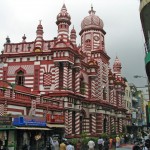 We depart for Sri Lanka and South India for a month-long visit on March 25, 2012.
We depart for Sri Lanka and South India for a month-long visit on March 25, 2012.
Sri Lanka, an island, is a tear shaped pendant hanging off the ear of India. Its natural bounty is a cornucopia of treasures, from the tea fields to the coconut plantations, each landscape more exotic than the next. Today its predominantly Buddhist spirituality mingles with remnants of its history in the spice trade to blend the unique culture which we are off to explore.
Ceylon, in the past, was a seducer to all of Europe. The Portuguese. The Dutch and the English. With each invader onslaught, it’s name changed. Serendip, Ratnapida (Island of Gems), Taprobane, Zillion, Zeiden, and Ceylon. The pendant became a mirror. It pretended to reflect each European power until the next new ships arrived and spilled their nationalities; some invaders stayed and intermarried. They came and overpowered the land, obsessive for something as delicate as the smell of cinnamon. As they became wealthy from the spice trade, when ships were still approaching, ten miles out at sea, captains would spill cinnamon onto the deck and invite passengers on board to “smell Ceylon” even before the island even came into view. “From Seyllan to Paradise is forty miles,” says a legend.
Ceylon past was a paradise to be sacked. Every conceivable thing was collected and shipped back to Europe: cardamons, pepper, silk, ginger, sandalwood, mustard oil, palmyra root, tamarind, wild indigo, deers’ horns, elephant tusks, hog lard, calamander, coral, seven kinds of cinnamon, pearl and cochineal.
If it was a paradise , it also had a darker side, fifty-five species of poisons easily available to the natives but it seems, never used against the invaders according to William Charles Ondaatje. Varieties of arsenic, juices from the centipede, scorpion, toad and glow-worm, jackal and”mongoose'” ground blue peacock stones–these could stun a man into death in minutes all footnoted in the Royal Botanic Gardens
Early and Recent History
According to the US Central Intelligence Agency website the first Sinhalese arrived in Sri Lanka late in the 6th century B.C., probably from northern India. Buddhism was introduced in about the mid-third century B.C., and a great civilization developed at the cities of Anuradhapura (kingdom from circa 200 B.C. to circa A.D. 1000) and Polonnaruwa (from about 1070 to 1200).
In the 14th century, a south Indian dynasty established a Tamil kingdom in northern Sri Lanka. The coastal areas of the island were controlled by the Portuguese in the 16th century and by the Dutch in the 17th century. The island was ceded to the British in 1796, became a crown colony in 1802, and was formally united under British rule by 1815. As Ceylon, it became independent in 1948; its name was changed to Sri Lanka in 1972.
Tensions between the Sinhalese majority and Tamil separatists erupted into war in 1983. After two decades of fighting, the government and Liberation Tigers of Tamil Eelam (LTTE) formalized a cease-fire in February 2002 with Norway brokering peace negotiations. Violence between the LTTE and government forces intensified in 2006, but the government regained control of the Eastern Province in 2007. By May 2009, the government announced that its military had defeated the remnants of the LTTE. Since the end of the conflict, the government has enacted an ambitious program of economic development projects, many of which are financed by loans from the Government of China.
In addition to efforts to reconstruct its economy, the government has resettled more than 95% of those civilians who were displaced during the final phase of the conflict and released the vast majority of former LTTE combatants captured by Government Security Forces. At the same time, there has been little progress on more contentious and politically difficult issues such as reaching a political settlement with Tamil elected representatives and holding accountable those alleged to have been involved in human rights violations at the end of the war.
The Flag
Yellow with two panels; the smaller hoist-side panel has two equal vertical bands of green (hoist side) and orange; the other larger panel depicts a yellow lion holding a sword on a dark red rectangular field that also displays a yellow bo leaf in each corner; the yellow field appears as a border around the entire flag and extends between the two panels; the lion represents Sinhalese ethnicity, the strength of the nation, and bravery; the sword demonstrates the sovereignty of the nation; the four bo leaves – symbolizing Buddhism and its influence on the country – stand for the four virtues of kindness, friendliness, happiness, and equanimity; orange signifies Sri Lankan Tamils, green the Sri Lankan Moors; dark red represents the European Burghers, but also refers to the rich colonial background of the country; yellow denotes other ethnic groups; also referred to as the Lion Flag









